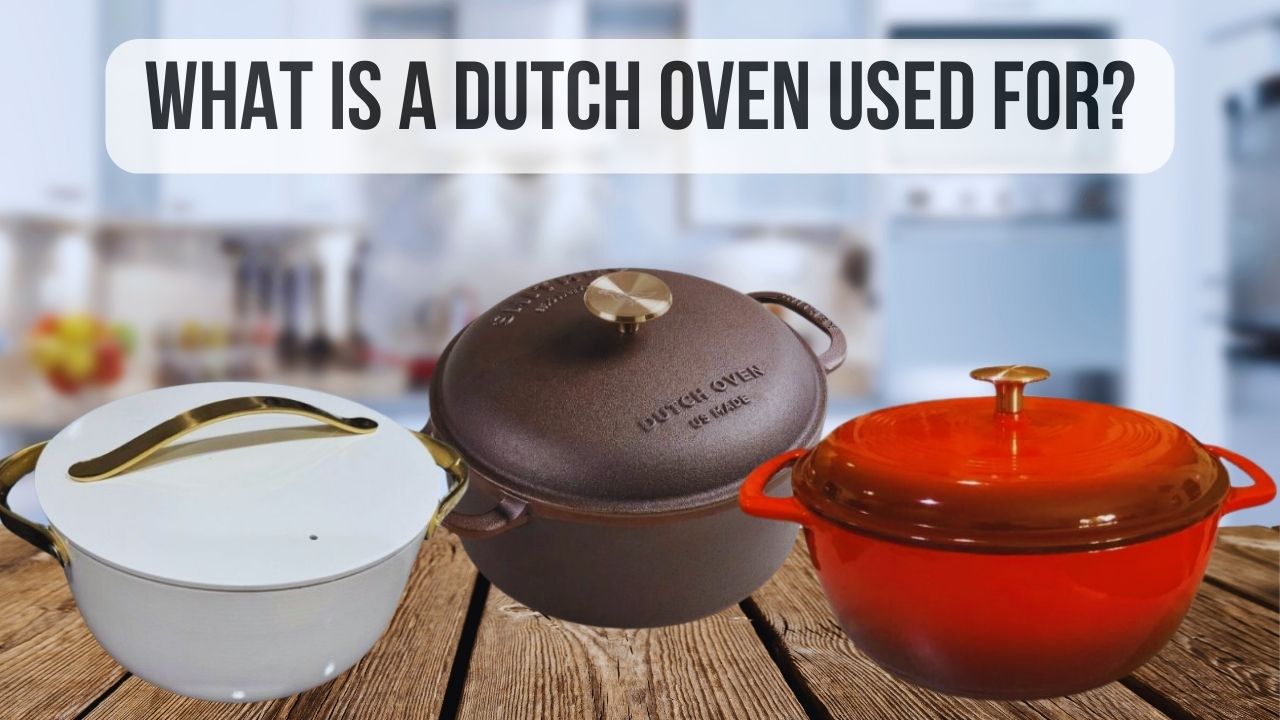The Dutch oven, a timeless and versatile kitchen tool, has been a staple in kitchens worldwide for centuries. With a decade of experience as a restaurant chef, it is a delight to delve into this cookware I frequently use in my restaurant and home kitchen.
Originally made for cooking over an open flame, the Dutch oven remains popular due to its ability to move effortlessly from the stovetop to the oven. This versatility makes it a must-have for any home cook.
In this article, we’ll explore what a Dutch oven is, its historical roots, and the various uses that make it an indispensable piece of cookware.
What is a Dutch Oven?

A Dutch oven is frequently built with cast iron with thick walls and a tight-fitting lid. However, modern versions may also be constructed from materials like aluminum or ceramic.
The hallmark feature of a Dutch oven is its exceptional heat retention and distribution properties, making it ideal for slow cooking, braising, roasting, and baking.
Historical Roots of Dutch Ovens
The Dutch oven has a rich history dating back to the 17th century. Although its name suggests a Dutch origin, it is believed that the Dutch oven was actually developed in England and later brought to the American colonies by early European settlers.
The design of the Dutch oven has evolved over the centuries, with various cultures contributing to its development. The iconic design we recognize today became particularly popular in the United States during the colonial era.
Uses of Dutch Oven
The Dutch oven‘s versatility is a key reason for its enduring popularity. Here are some of the primary uses that make it an essential kitchen tool:
Slow Cooking and Braising
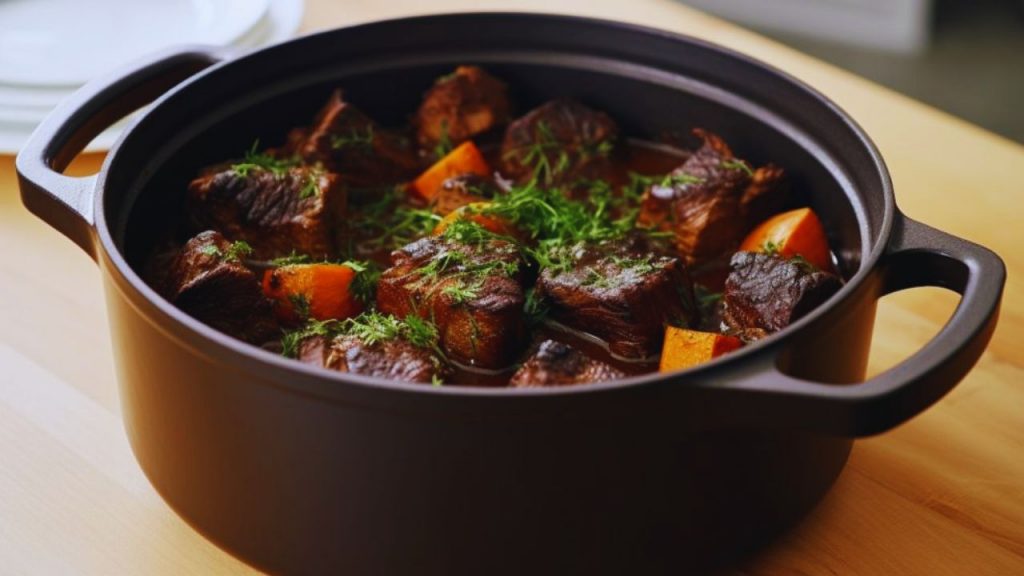
The Dutch oven excels at slow cooking and braising, allowing tough cuts of meat to become tender and flavorful. Its thick walls and tight-fitting lid create the perfect environment for low and slow cooking, resulting in succulent dishes like pot roast or coq au vin.
Roasting
With its ability to retain and distribute heat evenly, a Dutch oven is excellent for roasting meats and vegetables. Whether you’re preparing a whole chicken, a leg of lamb, or a medley of root vegetables, the Dutch oven ensures consistent cooking.
Soups and Stews
The Dutch oven‘s generous size makes it ideal for preparing hearty soups and stews. Its even heat distribution allows flavors to meld together and creates rich and satisfying one-pot meals.
Baking
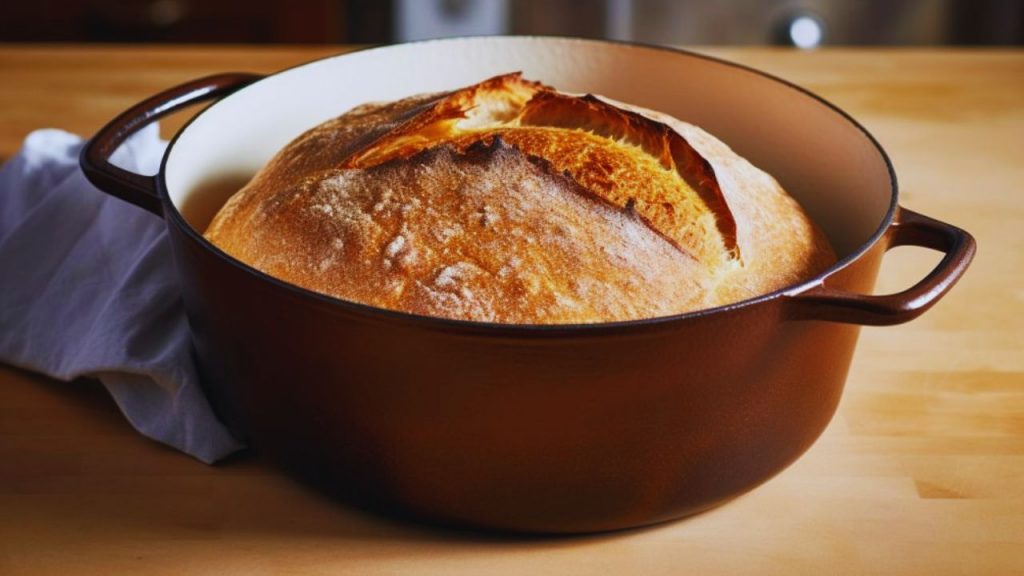
Yes, Dutch ovens can also be used for baking. Its ability to maintain a steady temperature makes it a reliable choice for baking crusty artisan bread, cobblers, and casseroles.
Frying
The Dutch oven‘s deep sides and ability to maintain a consistent temperature make it suitable for deep-frying. You can use it to make crispy fried chicken or homemade donuts. The Dutch oven will give you excellent fried dishes as it provides a stable and consistent cooking environment.
Types of Dutch Ovens
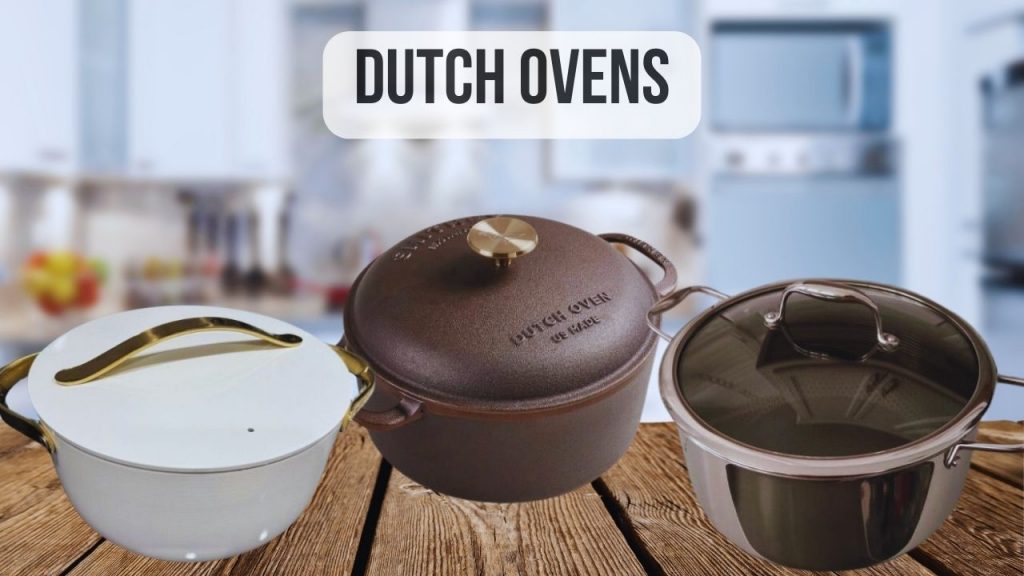
As mentioned, Dutch ovens‘ design and material composition have evolved over the years. While the classic cast-iron Dutch oven remains a favorite, various types now cater to different preferences and cooking needs.
Here are some of the types of Dutch ovens.
Classic Cast Iron
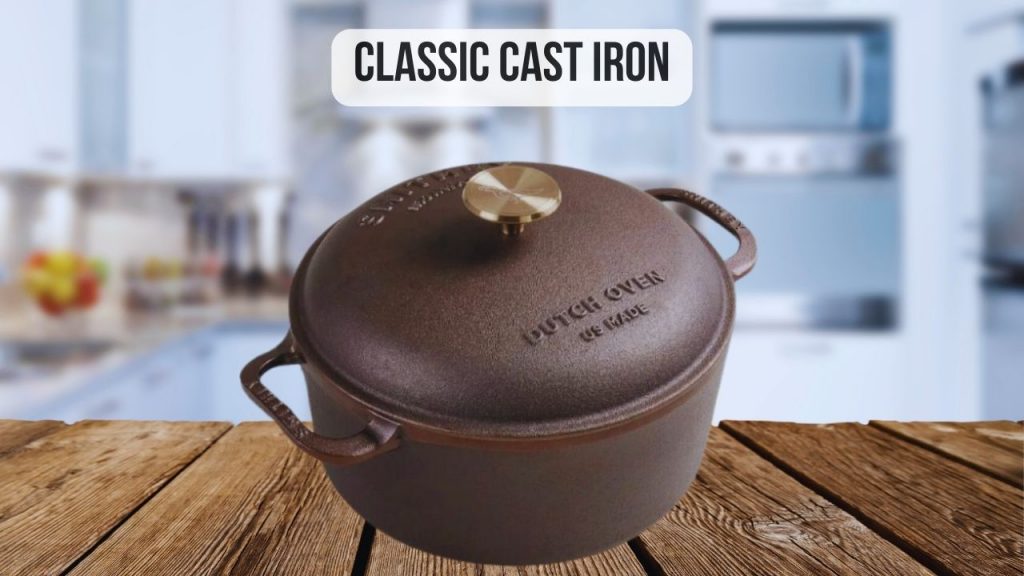
The traditional cast-iron Dutch oven is celebrated for its exceptional heat retention and even distribution. These durable pots develop a natural non-stick surface through seasoning, enhancing their performance over time. Brands like Lodge and Le Creuset offer a wide range of sizes and types of Dutch ovens.
Enameled Cast Iron

Enameled cast-iron Dutch ovens are coated with a layer of enamel, offering a non-reactive surface that doesn’t require seasoning. This makes them ideal for acidic dishes like tomato-based sauces. Le Creuset is renowned for its colorful, enameled cast-iron Dutch ovens, adding a touch of style to the kitchen.
Aluminum Dutch Ovens
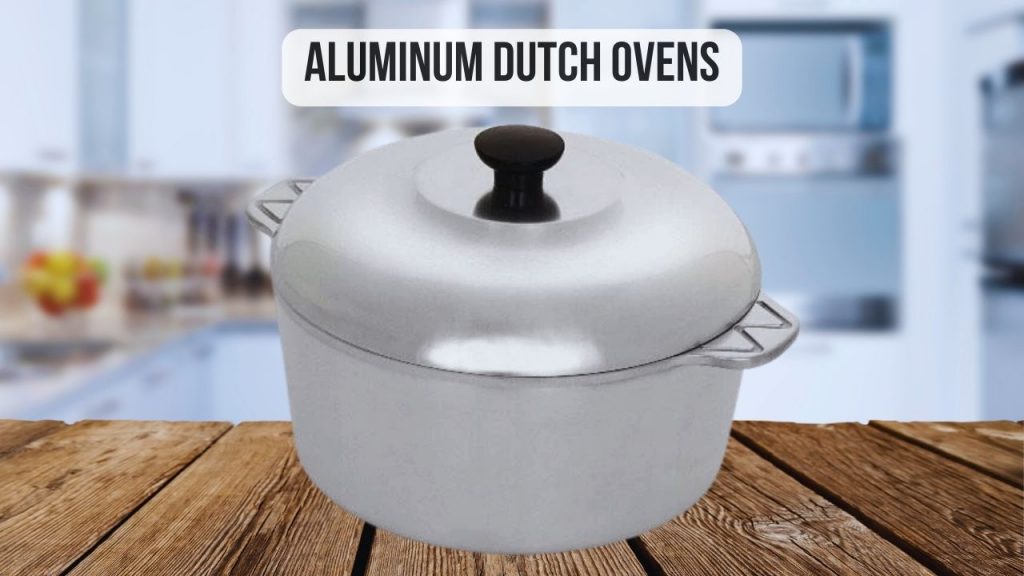
Aluminum Dutch ovens are a popular choice for those seeking lighter cookware without compromising heat conductivity. They heat up quickly and are easier to maneuver, making them a practical alternative for specific cooking applications. However, they may lack the same level of heat retention as cast iron.
Ceramic Dutch Ovens
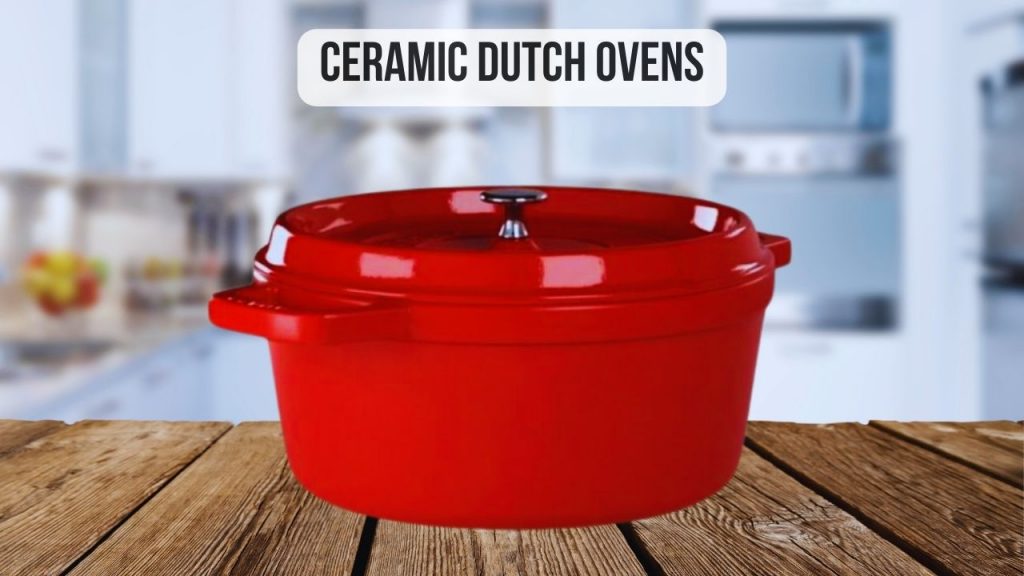
Ceramic Dutch ovens are appreciated for their attractive designs and ability to retain heat. While they may not have the same heat conductivity as cast iron, they are excellent for slow cooking and baking. Brands like Staub offer ceramic options with vibrant glazes and intricate designs.
Stainless Steel Dutch Ovens
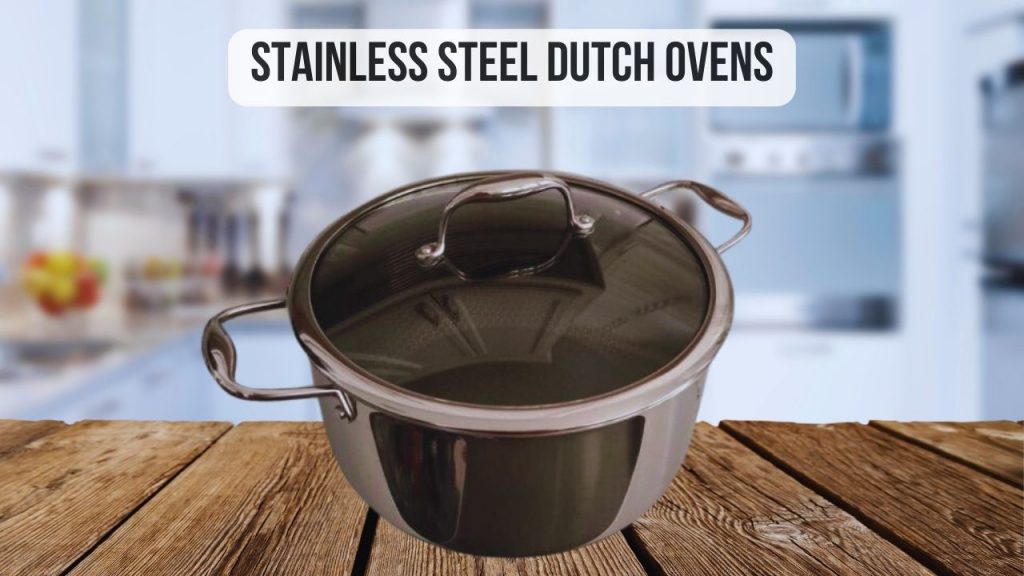
Stainless steel Dutch ovens are prized for their durability, resistance to corrosion, and sleek appearance. While they may not retain heat as effectively as cast iron, they offer a lighter alternative and are often dishwasher-safe. HexClad and Calphalon are notable brands producing high-quality stainless steel Dutch ovens.
Multi-Functional Dutch Ovens
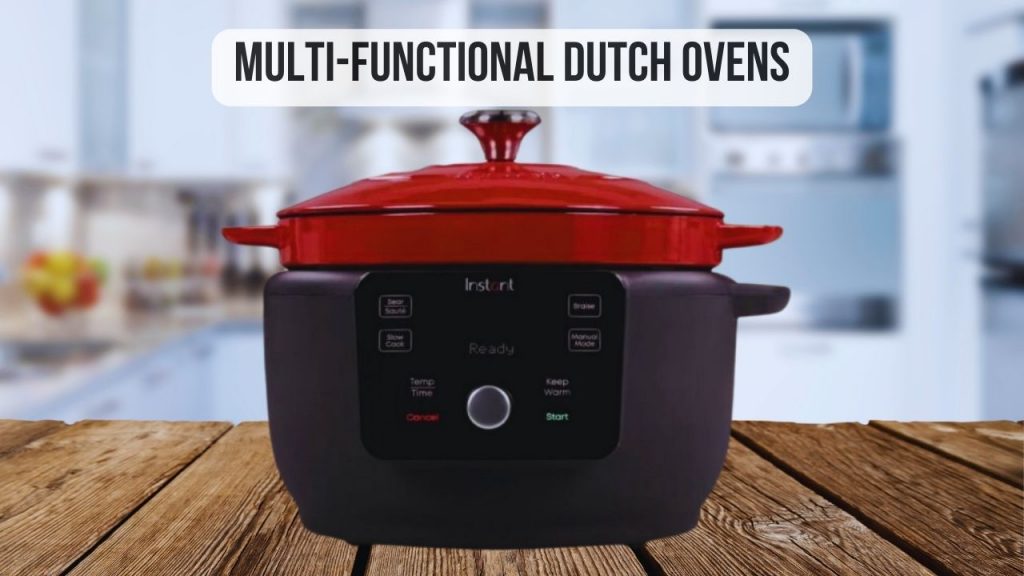
Some Dutch ovens feature additional functionalities such as grilling surfaces or detachable components. These innovative designs cater to those who want a single piece of cookware that can handle a variety of cooking techniques.
Tips for Cooking with a Dutch Oven
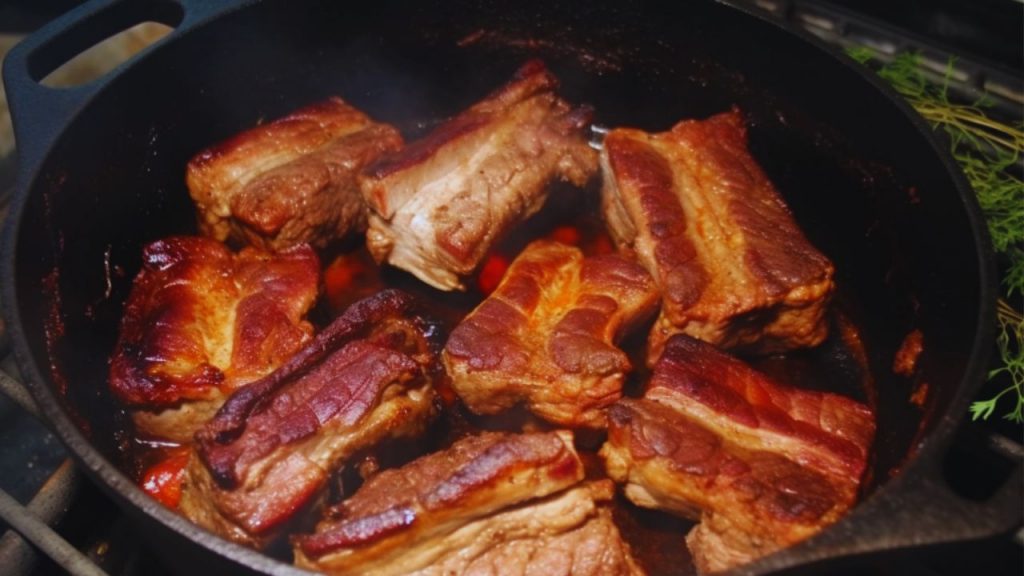
As a seasoned chef, I’ve enjoyed creating innumerable flavorful dishes using the versatile Dutch oven. Allow me to share a few tried and true tips for elevating your culinary creations and making the most of this timeless kitchen companion.
Preheat and Sear
Before diving into slow-cooked wonders, ensure your Dutch oven is properly preheated. Searing meats or vegetables in the hot pot before slow cooking enhances flavors by creating a caramelized exterior.
Mindful Temperature Control

The Dutch oven‘s ability to retain heat is a double-edged sword. While it ensures even cooking, it’s essential to be mindful of temperatures. Start with medium heat, gradually letting the pot reach a temperature. Once hot, adjust the heat as needed to maintain a gentle simmer for stews or a consistent roasting environment.
Leverage the Lid
The tight-fitting lid is your ally in Dutch oven cooking. It traps moisture, making it ideal for braising and preventing dishes from drying out during long cooking times. However, remember to occasionally lift the lid to let steam escape if you’re aiming for a crispy crust on a roast or bread.
Experiment with Marinades
The Dutch oven is a canvas for flavors. Enhance your dishes by marinating meats before cooking. Allow the ingredients to soak up the flavors overnight, infusing your creations with depth and complexity.
Layer Flavors with Aromatics
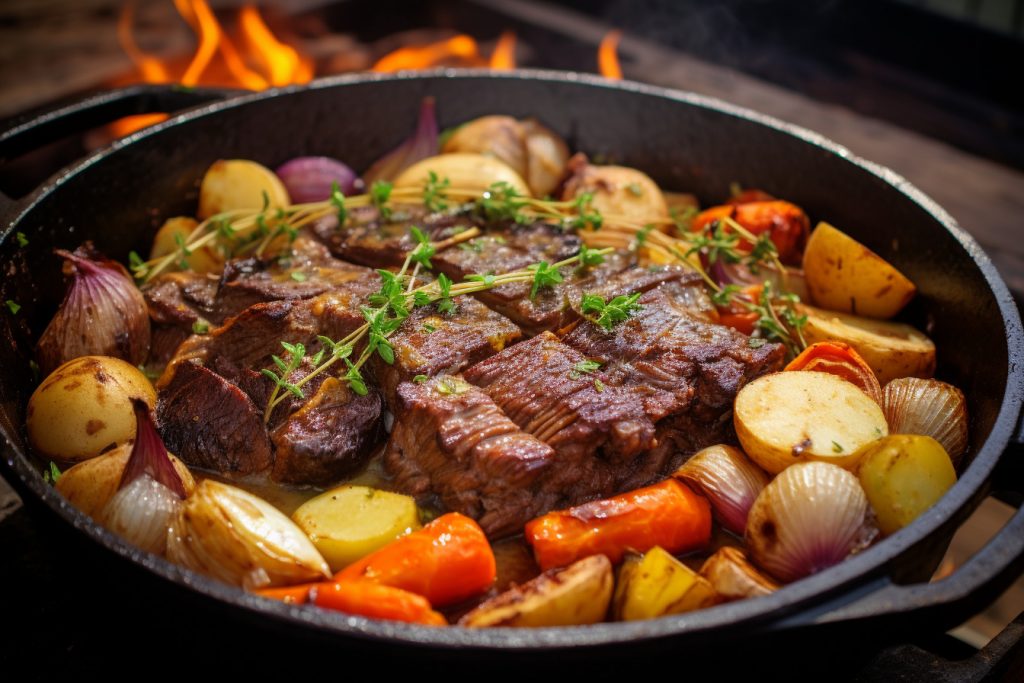
Elevate your recipes by incorporating aromatic vegetables and herbs. Onions, garlic, carrots, and fresh herbs contribute layers of flavor during the cooking process. Don’t hesitate to get creative with your aromatics; they can enhance a simple dish into a culinary masterpiece.
Embrace One-Pot Wonders
The beauty of the Dutch oven lies in its ability to streamline your cooking process. Experiment with one-pot recipes that incorporate a variety of ingredients. The melding of flavors in a single vessel simplifies cleanup and enhances the overall dining experience.
Size Matters
Choose the right-sized Dutch oven for your recipe. A pot that’s too large may lead to uneven cooking, while one that’s too small can result in overcrowding. Aim for a balance that allows ingredients to have ample space for even heat distribution.
Conclusion
The Dutch oven is a culinary maestro, conducting a symphony of flavors. As a seasoned chef, I’m sure this versatile pot has proven its mettle in the hands of cooks across cultures and generations.
This timeless piece of cookware continues to play a central role in culinary traditions. Whether you’re a professional chef or a home cook, the Dutch oven is a valuable investment that will enhance your recipes.
Take a moment to browse through the list of the best Dutch ovens.

